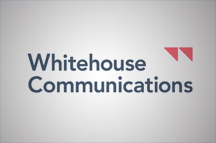Missing princesses, doctored photographs, and ‘kill notifications’ have thrown the royal family into their most tumultuous press storm since the Duchess of Sussex’s monumental ‘unsilencing’ via her interview with Oprah in 2021. In this piece, we’ll have a look at what’s gone wrong, where their PR strategy faltered, and some steps the Palace could take to fix it.
‘Never complain, never explain’, the personal motto of the late Queen Mother may have been the guiding principle for royal press relations for much of the 20th century, but as the Prince and Princess Wales have found over the last few weeks, this approach has come to its limits in 2024.
Tongues in the royal blogosphere started wagging in January when Kensington Palace announced the Princess had undergone planned abdominal surgery, and would be taking an absence from royal duties, but amid an impending election, recession and war in both Europe and the Middle East, the UK media had more pressing matters to attend to.
As the weeks and months marched on, and the Princess wasn’t seen in public even ‘off-duty’, online conspiracy theories began to swirl, spurred on by an inimitable campaign of memes about her whereabouts. After an awkward and distant paparazzi shot of the Princess apparently driving her car, rumours and speculations that all was not well with the Waleses continued to grow.
The frenzy came to a head on Mother’s Day, after Kensington Palace released an edited photo, a series of news agencies sent out their infamous ‘kill notification’, and a stulted apology from the Princess herself for her ‘experiment with editing’. So where did two of the most popular members of the royal family go wrong, and how could they have avoided this problem?
While the couple’s desire for privacy is understandable, by releasing a heavily edited photograph, which has had to be recalled in a highly unusual move by news agencies, they have damaged trust with both the press and, by extension the public. Conspiracy grows where trust is broken (just ask a politician!), and now every photograph or statement released to the media by the Palace will be under greater scrutiny than it ever has been.
There was clearly a desire to show the public that the Princess was well, without compromising family privacy, and inviting further press intrusion. The first and most obvious way of avoiding this issue, would have been to release an unedited photo in the first instance. Once the kill notification had gone out however, they still could have taken over the narrative by doing one of 3 things:
The most straightforward option would have been to release a ‘b-roll’ photo of the Mother’s day photographs – perhaps a photo where one of the children were pulling a face, with a snappy caption joking about taking a nice family photo with 3 children. This would have had two primary effects – it would have provided an accounting for the motivation behind the edited photo (because taking a nice unedited photo of 3 mall children is a challenge many parents can relate too) and would show that the Princess is as happy and comfortable as the Palace were clearly trying to convey.
To invite a sympathetic journalist to interview the couple in connection with a charitable cause from home. Assuming that the Princess was well enough to be interviewed, an at-home sit-down to discuss one of the couple’s charities, where they could be photographed would mean that they could dispel the conspiracy theories without having to directly engage them. Unlike the office of their in-laws, the team at Kensington Palace have good relationships with a number of UK journalists, and in this instance leveraging these could be a real boost for their public credibility.
The option they ultimately went with – have the Princess seen off-duty in public. While this has helped quell the row somewhat, by having her sat on the other side of the car from the camera behind a tinted window has done little to quieten concerns in many corners of the press and public.
Moving forward, Kensington Palace’s press office will need to think about how they can rebuild trust. In comparison to the Sussexes, the Waleses have escaped intense scrutiny from the UK press for the most part over the last few years, but they need to rethink their strategy moving forward. While desires for privacy are understandable, as future King and Queen they will need to find ways to be seen to be transparent and honest with their subject, while still maintaining appropriate boundaries.
by Poppy Kirby-Green, Account Director, PR












